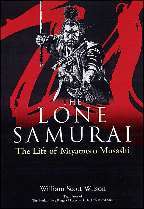I have a confession to make. Martial arts books put me to sleep. Hm, guess I’d better qualify that statement. There are some very famous Japanese warrior texts and some books by very famous Western groundbreakers that are sure-fire insomnia cures, for me at least. This is in no way a comment on the information in these books–which shall remain nameless–but rather a criticism of the writing style. In translations of seventeenth century formal warrior texts, the soporific quality cannot really be helped, unless one is to entirely modernize the text. But if the result is anything like some of those horrific modern renditions of the Bible floating about, designed to be relevant to today’s youth, I’ll give that option a pass and stick with reading just a few pages at a time, with a cup of coffee at my elbow.
The list of truly readable writers in the martial arts field is short; Dave Lowry and Ellis Amdur spring immediately to mind. Now, we can add to that list William Scott Wilson. His new biography of Miyamoto Musashi, The Lone Samurai, is a delightful and fun read. This is the first book-length work in English on Japan’s most famous sword saint. While separating life from legend is virtually impossible in the case of Musashi, Wilson has done a remarkable job of presenting what is known and extrapolating what might probably have been. Wilson does not over-dramatize his material (something I find distracting), but tells Musashi’s story in a matter-of-fact, yet surprisingly entertaining, way.
After finishing his translation of Book of Five Rings, Wilson decided he wanted to know more about both Musashi the man, and his enduring legend. Drawing on material ranging from the inscribed monument erected by Musashi’s adopted son Iori in 1654, through history and accounts of various clans and domains, to the popular retellings of Musashi’s adventures, Wilson has scoured Japanese sources to find the answer to his question: “Who was Miyamoto Musashi?”
Wilson’s expertise in research comes from decades of translating Edo-era Japanese texts, and the results are perhaps best displayed in how he is able to place Musashi into the context of his time and culture. Wilson provides useful background information on the tea ceremony, calligraphy, Zen, the Kyoto Renaissance, and the history of Japanese garden design–for Musashi was much more than just an undefeatable swordsman. I was fascinated to discover that in his later years, Musashi was responsible for the design of several gardens in Akashi and Himeji (I knew there was a connection between swordsmanship and gardening!).
Appendices chronicle the Musashi legend on stage and in film, and Wilson also provides an overview of influences and parallels to Musashi’s work in Book of Five Rings. A bibliography and glossary round out this essential book. All-in-all, this book is not to be missed and should be on the shelf of every student of the classical Japanese sword arts.

